How tight should my rock climbing shoes be? Are climbing shoes supposed to hurt? Will I ever be able to show my feet in public again? The importance of getting the right fit for your climbing shoes can’t be understated. Let’s bust some myths, help you find the right fit and style, and talk way too much much about feet.
It took a while for climbing shoes to become the tight, performance focused slipper they are today. The main advantages in climbing shoes are that the toes are very close to the front of the shoe, the shoe is fitted well enough that there isn’t much movement, and the sticky rubber soles. If the shoes are worn correctly they should feel tight but not painful.
Looking for the most comfortable climbing shoes?
These are our absolute favorites for comfy shoes that still climb hard
Beginners – La Sportiva Tarantulace
Vegan Beginner – Black Diamond Momentum
Good All Rounder – La Sportiva Katana Lace
Trad – Scarpa Maestro
Why Are Climbing Shoes Worn So Tight?
When climbing you’ll put a lot of pressure into your toes. If your toes aren’t at the front of the shoe you won’t have very much control or feel. Also, if your climbing shoes fit isn’t close enough or have baggy spots (often the heel) then then can move around the foot and you can slip off holds.
When you buy street shoes the aim is to not have your toes hit the front and to have space around the foot. With climbing shoes, all parts of the inside of the shoe should fit closely around the foot. You aren’t meant to walk anywhere in climbing shoes.
Tight climbing shoes are often tight in the wrong places. The main problems with climbing shoes being painful are: –
- The first technical climbing shoes were made of leather that stretched up a few sizes over use. Climbers used to have to aggressively downsize to get the ideal fit after a few months
- More modern shoes are either lined, made of synthetic non-stretchy materials, or have a large amount of rubber. All of these minimize stretch – making it important to get the fit right first time
- Climbing shoes aren’t meant to be comfortable necessarily – though they shouldn’t be constantly painful
- Beginners aren’t used to the fit. Eventually your feet and toes get a little desensitized to the shape they are forced into
- Most Importantly – There are hundreds of designs made for different foot shapes – not all shoes fit all feet. This causes the most issues
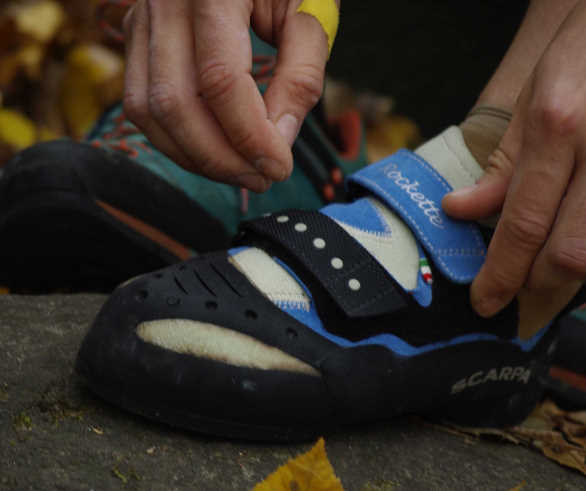
The Truth About Tight Fitting Climbing Shoes
If you are new to climbing you should get flat, beginner climbing shoes that fit tight but fit right. Simple as that. The main issue we see is newer climbers getting down turned shoes that don’t fit correctly. If you aren’t used to the down turn of more aggressive shoes then you could end up getting them a little too big. This causes loose areas and hot spots in the shoe which lead to discomfort because the shoe can’t support your foot like it’s supposed to.
You also need to make sure match the shape of the shoe to your foot. Figure out if you have a wide or slim foot, if your heel is large or small, and if you have a high or low in step. Shoes are designed differently and you should match the climbing shoe to your foot shape as much as possible.
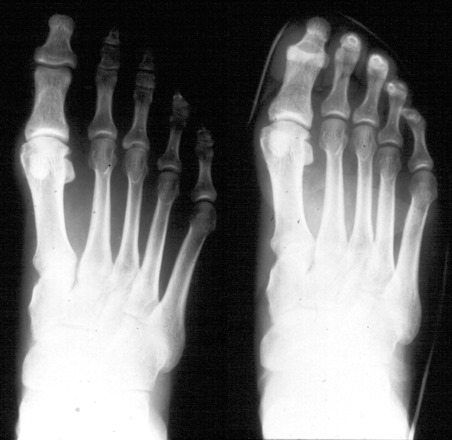
If you are looking past your first pair or have been climbing for a while this still applies. There are a huge range of great, down turned and aggressive shoes out there. Don’t stick to one brand or one specific shoe (Solutions aren’t the only solution) when wanting better performance. You might be tempted to buy a shoe that performs well but doesn’t feel “right” straight away, hoping the fit will get better. Don’t. You will find a shoe that’s the right shape for your foot so shop around and always try on in store.
Should Toes Be Curled In Climbing Shoes?
Basically, yes. Even in beginner climbing shoes your toes will be curled up just a little to keep them close to the front edge of the shoes. Your big toe will be curled down and this is probably the biggest pain point for most.
In beginner shoes the big toe should only be at around a 45 degree angle downwards at maximum. If the shoe fits right it should support this position without pain – though it won’t be completely comfortable.
Without the downturn your foot will flex a lot when standing on holds. This can end up being more painful as the shoe squishes your foot. This is generally the problem in hire shoes.
Hire shoes are designed to be flat and end up being worn out and baggy unless worn very tight. When worn tight they won’t fit well very and cause pain. Get your own pair as soon as you can. Essentially when wearing a good pair of climbing shoes toes curled is by design.
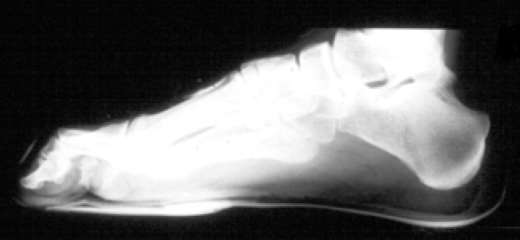
Read our full climbing shoe guides for recommendations
– Our complete guide to the Best Climbing Shoes of 2020
– Complete guide to the Best Beginner Climbing Shoes
– Should I wear socks with climbing shoes? No.
– Best Climbing Shoes For Sweaty Feet
– Best Climbing Shoes For Kids
How Should Climbing Shoes Fit?
If you are looking to get your first pair of climbing shoes, or replacing your first pair that never fitted right, stick to these rules: –
- Get flat, straight shoes – No downturn, symmetrical (not twisted inwards)
- Try a loads of pairs in store to make sure they fit your foot shape
- Of the two big brands generally Scarpa fit a wider foot and larger heel shape and La Sportiva are slimmer
- Try a Low Volume / Women’s shoes (same thing) if you have a slimmer foot – Don’t worry about gender branding
- Fit them tight enough that they fit snug around all areas of your foot
- Climbing shoes fit tight – not painful
- Pay attention to your heel
- Excessive wrinkling or bunching when pushing down is a bad sign
For your intermediate or more advanced climbing shoes: –
- Try different brands. Butora, evolv, Unparallel, and Tenaya and others all make world class shoes
- Different shoes for different climbs – steep overhangs and crack climbs will probably want different shoes
- Be aware of your foot shape and heel size
- Know how down turned you can go before pain
- Know how much asymmetry you can take in a shoe
- Consider slip-ons or straps for taking off between burns
Do Climbing Shoes Stretch?
In general yes – but it depends on the shoe. Softer, natural materials like leather or suede will stretch more than synthetic. If a shoe is lined it has fabric inside dedicated to keeping the shoe of the shoe. If the shoe has a lot of rubber it will generally keep it’s shape better too. Some shoes come with dedicated systems like La Sportiva’s P3 Permanent Power Platform. These have internal rubber supports that keep the shoe’s power and shape.
We’d generally suggest finding a size that fits you – then possibly size down for better longevity. A very soft leather shoe like the Mythos or Anasazi can stretch up to three or four sizes over it’s life time. Something like the Katana Lace will stretch around a full size. A synthetic shoe might only stretch half a size if at all. Something synthetic with a lot of rubber like the Evolv Phantom may not stretch at all.
So, What Size Climbing Shoes Should I Get?
It totally depends on the brand and what foot shape you have. Go to a good climbing shop with a good range and take your time. Try a few pairs of different shoes and in different sizes. As we’ve said you should first try to get a pair that fits your shoe shape. Start off with your normal shoe size and go from there. Should I size down? A lot of brands will fit best when the shoe size is lower than your street size but this isn’t a hard rule.
If you are going to order online it’s worth looking around the internet to see what others suggest. We have size guiding in our guide to the best climbing shoes of 2020. Results can vary wildly as people are used to different levels of comfort. We’d still suggest going local and trying them on. Climbing stores and gyms could really do with your support if you can help. It’s always worth asking if they price match online prices or could meet you half way on price.
Why Are Climbing Shoes Down Turned?
Down turn in climbing shoes is how much the whole foot will curve downwards in the shoe. You can see below that lower down turn is more comfortable and higher downturn is normally seen as higher performance. This isn’t just how curled your toes are but how curved the whole foot is. Having your foot in this positions forces more power into your big toe and the inside edge of your foot. It also helps hugely when hooking your toe on to small edges or into pockets on overhangs climbs.
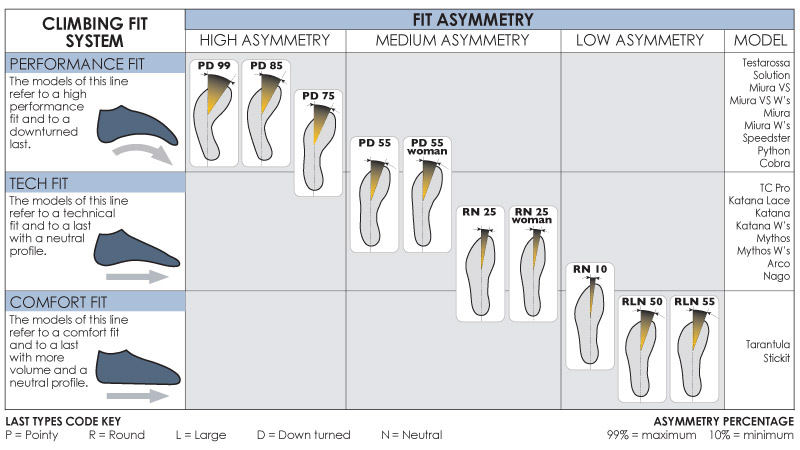
Why Are Climbing Shoes Asymmetric?
Along with down turned, having a shoe that is asymmetric pushes more power into the big toe. Asymmetry in climbing shoes means how turned inwards your toes are. This asymmetry adds another layer of discomfort to shoes and standing on flat ground with asymmetric shoes isn’t comfy at all.
What Materials Are More Comfortable?
Materials go a long way in helping the comfort of climbing shoes. In general leather – especially suede – is more comfortable than a synthetic material as it will stretch more when hotter. Leather also stretches over time so the shoe will fit your individual shoe shape better as it wears in. Some shoes include a padded tongue which can help with comfort.
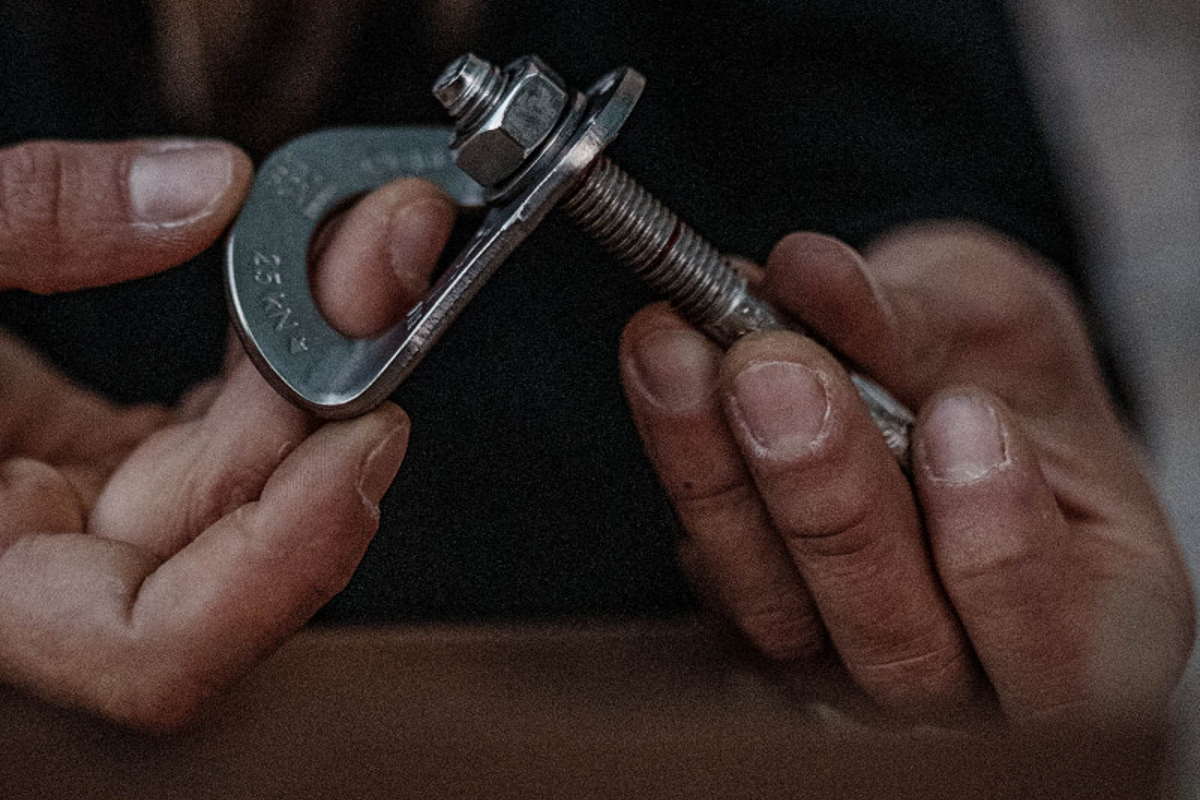
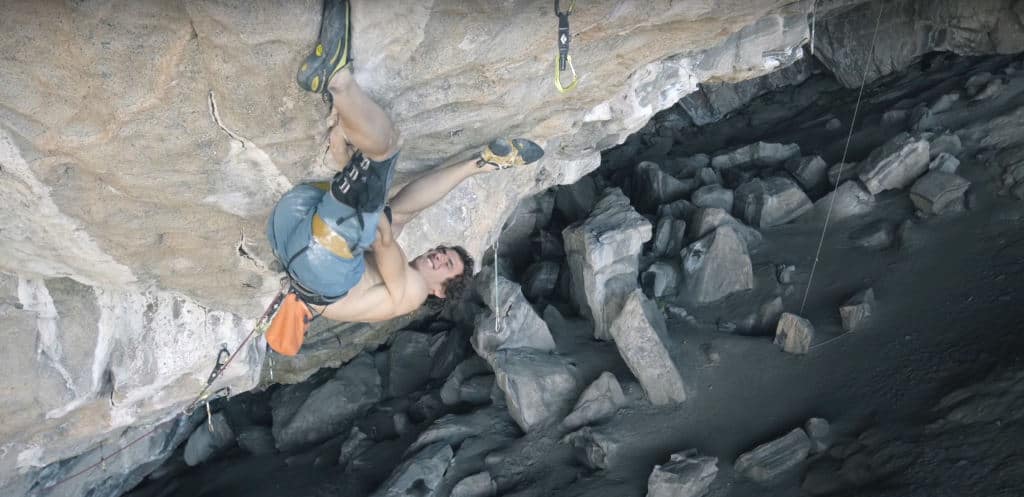
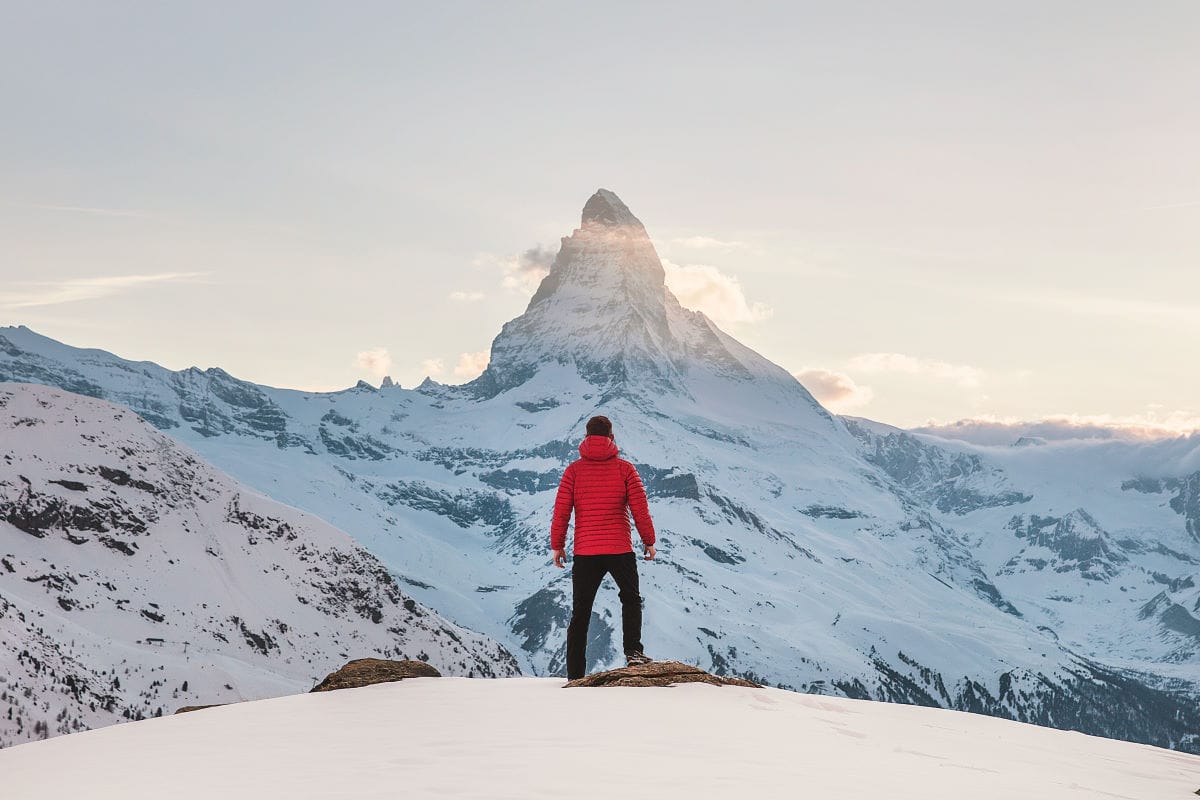
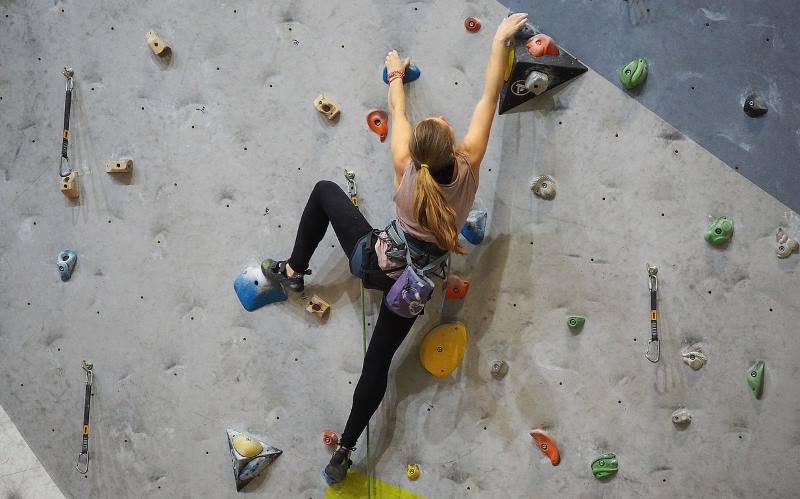

3 thoughts on “How Should Climbing Shoes Fit? No More Painful Pinkies”
Comments are closed.